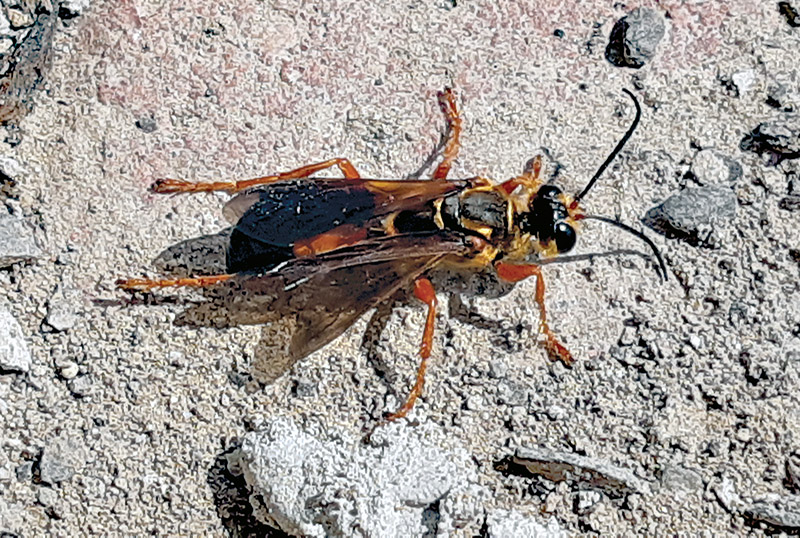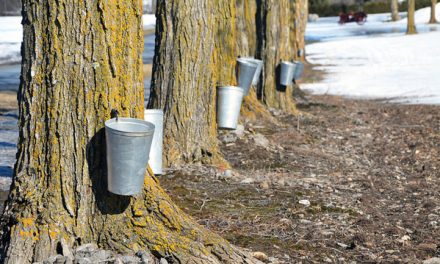Great golden digger wasp is native to the Americas and show a fascinating nesting behaviour. Al-Rajab Photo
If you observed huge, coloured wasps digging in ground around your property, they wouldn’t attack you despite their alarming look.
The great golden digger wasp (Sphex ichneumoneus) is a solitary insect native to the Western Hemisphere, from Canada to South America. Their season in Ontario is from June to October. Adult wasps measure 15 to 27 mm, and males are slightly smaller than females. They owe their name to the short golden hairs that cover the thorax and head. They have a narrow waist and a bi-coloured abdomen, black antennae and orange or golden-brown wings.
These wasps may spend an optimal amount of time in the pre-digging search behaviour and that frequency-dependent selection may be an important factor in the choice of nesting sites. Wasps are not active unless temperatures are high, and they are less active during cloudy weather.
Wasps dig their own burrows, but they often have to abandon these burrows because of temporary unsuitability. Numerous scientific studies covered the fascinating nesting behaviour of digging wasps. After mating in spring, females will dig into loose soil and create a nest. The nests are multicellular with a cylindrical principal tunnel (15 mm wide and 150 mm deep), and secondary tunnels reach to cells. The cells are broader than the tunnels and parallel to the soil.
A female will track small insects and sting them to paralyze, but not to kill them, they remain able to eliminate faces and slightly moving their antennas and mouthparts. The female carries the prey in flight to the nest. The female lays an egg on each prey, when the larva emerges from the egg, it feeds on the insect left for it by the female. There is only one generation a year. Unlike other wasps, she does not actively defend her nest.













